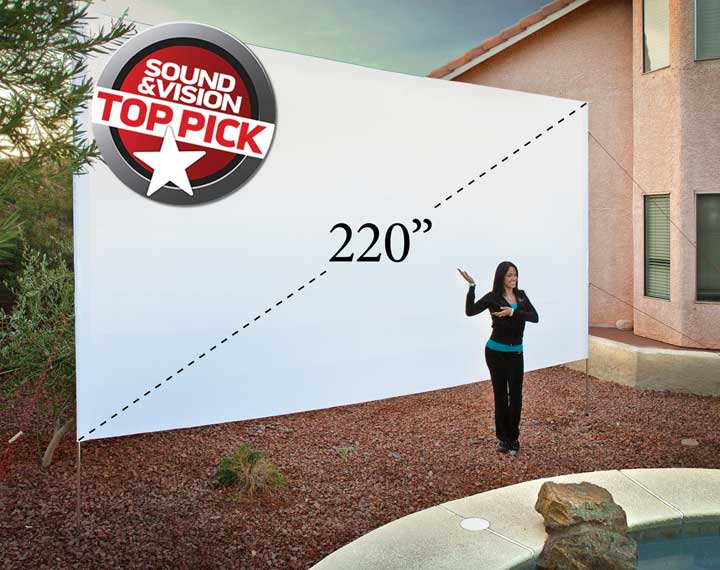Choosing a Screen
Some people hang a sheet on the wall and call it good! Others want to step it up a notch or two. Outdoor movie screens run a wide gamut. There are both smaller and larger screens on the market. Some have rigid metal structures, some inflate with one or more fans. Our approach to outdoor movie screens was to keep them as portable, simple, versatile and affordable as possible.

Features to consider:
Diagonal Measurements: Pay attention when you are pricing screens; some sell the measurements of the structure rather than the screen. A screen’s actual size
is often referenced in diagonal inches.
Front or Rear Projection: Some screens can only be projected from the front, OutStandingScreens™ can be front or rear projected.
Weight and Convenience: Bear in mind that someone has to set up, tear down, and store your screen. The time and energy it takes to go through this process may be important.
Maintenance: How do you clean the screen? How will it store? Can you get replacement parts? What if a fan quits working? Can you find and patch leaks?
Size: How large a picture can your projector project? This is often referred to as throwing distance in your projector specifications and is measured in diagonal inches. A 16’ x 9’ screen is 220” diagonally and requires about 25’ of throwing distance.
Aspect Ratio: 16:9 is likely, but you may run into 4:3 screens. Read more about aspect ratios to understand the significance of aspect ratios or screen proportions.
Distance: How far is your screen likely to be from your projector? The further back you get the bigger the picture gets.



